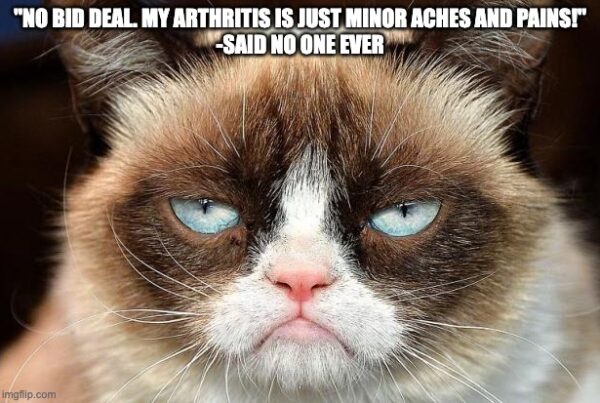Look at them. It’s mesmerizing, glorious, a true feat of nature. The secret to being able to kick as high as the Empire State Building isn’t that they were born to a stage mother that wouldn’t quit…
…though I assume that helps. These ladies know that they’re only as strong as their weakest knee. Knee pain would be debilitating in this line of work. One former Rockette told me that if they made a single mistake they were socially ostracized and forced to do one-legged squats until they cried or collapsed, whichever came first. (I spoke to no Rockettes for the writing of this article.).
Knee pain is common at any age. It can strike young women as early as puberty, it can result from chronic exercise, it could be hereditary, or gradually become an issue with age. As a chiropractor for knee pain in Springfield, Illinois, I know that knee pain is so common in the U.S. it’s the reason for about 1/3 of doctor visits for muscle and bone pain.
Generally, knee pain is the result of two things:
And
Arthritis, in all its forms, is the most popular offender with mature adults. Types of arthritis such as:
- Osteoarthritis
- Gout
- Reactive arthritis
- Lyme disease
- Lupus
- Ankylosing spondylitis
- Psoriatic arthritis
- Infectious arthritis
Athletes are the other population most likely to experience knee pain, regardless of skill level. Knee injuries such as:
- Meniscal injures
- ACL and PCL injuries
- Tendonitis
- Bursitis
- Loose bodies
- Osgood-Schlatter disease
- Dislocated knee cap
- Iliotibial band syndrome
- Plica syndrome
The knees are a complex joint, the largest in the body, and it’s got a pretty big job. We need our knees for this…
…just as much as we need them for this
The knee is where the femur, the tibia, the shin, and the patella meet in a labyrinth of cartilage, ligaments, and muscles. The knee joint relies on its support muscles, the hamstrings and the quadriceps, to maintain range of motion and to keep the knees strong and healthy.
There are plenty of options out there for knee pain relief that involve over-the-counter (or stronger) medications, injections, or knee replacement surgery. But quite frankly I think that begs the question and answer:
Research shows that even minor increases in quadricep strength reduce the risk and progression of osteoarthritis as well as reducing the pain. I don’t know, maybe I’m totally out of touch here, but it seems like a much better idea to spend a few minutes a day doing a squat routine rather than paying thousands of dollars for this:
Best Strengthening Exercises to Reduce Knee Pain
Straight from the Rockette’s trainer in the Big Apple, these are the best knee strengthening exercises that help to get rid of knee pain and get them back on the dance floor. These exercises should be performed on both legs, even if there’s only pain in one leg. This will balance the strengthening of the legs and may actually help support the knee better. Woohoo!
Squats
With feet hip-distance apart and the pelvis slightly tucked, place all weight into the heels and squat like sitting in a chair. Keep the upper body upright and stick out the butt. Do this 10-20 times.
Single-Leg Squat
This is a little more challenging than a traditional squat.
Ok, a lot more. Start in a squat stance and sit back on the right leg while raising the left foot and extending the left leg. Go down as far as possible and return to standing. Do this 10 times on each side.
To stay balanced, start with the left toe touching the ground and focus on a stable point.
Step-Ups
Find something to step on, a bench, a box, a toddler. With the right foot, step up onto the object and bring the left foot along for the ride. Step back down with the right foot and bring the left down too. Alternate feet so that the next step starts on the left. Do this 20 times.
Backward Stepping Lunges
With feet hip-width apart, step backward with the right foot and lunge down. The knee should not extend beyond the ankle. Push off the back heel to the starting position. Repeat on the other side. Do this 10 times on each leg.
Front Stepping Lunges
Same drill, but the other way.
Feet hip-distance apart step forward with the right foot and lunge down. Remember, the knee shouldn’t extend beyond the ankle and the weight should be in the heels. Push off the heel back to the starting position and repeat on the other leg. 10 times on each leg.
Not all of us are dancers, nor do we want to be. Some of us just want to be able to walk up and down the stairs, or bend over to pick up our grandchild. These knee pain exercises might be more up our alley. Notice where all these exercises start.
Quadriceps Strengthener
Start by laying on the back. Place a rolled towel or even a foam roller underneath one knee. Engage the quadricep on that same leg so that the knee is straight and hold this contraction for five seconds. Release and repeat, 10 times on each side.
Straight Leg Raise
On the back, stretch both legs on the floor. Lift the right leg about six inches and hold it there for 10 seconds. Keep the core engaged, that means tight abs. For extra support, it may help to put hands underneath the small of the back. We want to avoid arching here. Keep the core and quadriceps engaged at all times. Repeat this five times on each side.
Hip Adduction
On the back, on the floor, bend the knees keeping feet on the floor. Play a small pillow or foam roller between the knees and squeeze the legs together. Hold the squeeze for 5-10 seconds. Release and repeat 10-20 times. Yes, 10-20. Trust.
Hip Raise
On the back, on the floor, bend the knees keeping feet on the floor. Deja vu. Keep the heels close to the butt and push off with the heels lifting the hips towards the ceiling. Hold there for 5-10 seconds. Release and repeat 10-20 times.
At the Springfield Wellness Center, we believe therapeutic corrective exercises are critical to any chiropractic care plan for knee pain. Strengthening supporting muscles helps chiropractic adjustments to hold longer and keeps the knees from the dangers of instability. We could correct an issue, but if the support system for the joint isn’t stable that issue will continue to rear its head over and over and over again.
Call us or schedule a visit with one of our amazing doctors who take time to understand each patient’s unique experience and goals. Whether it’s the boards of Broadway, the fields of Memorial Stadium, or 6th Street, we can help get the knees in working order and keep them that way.



